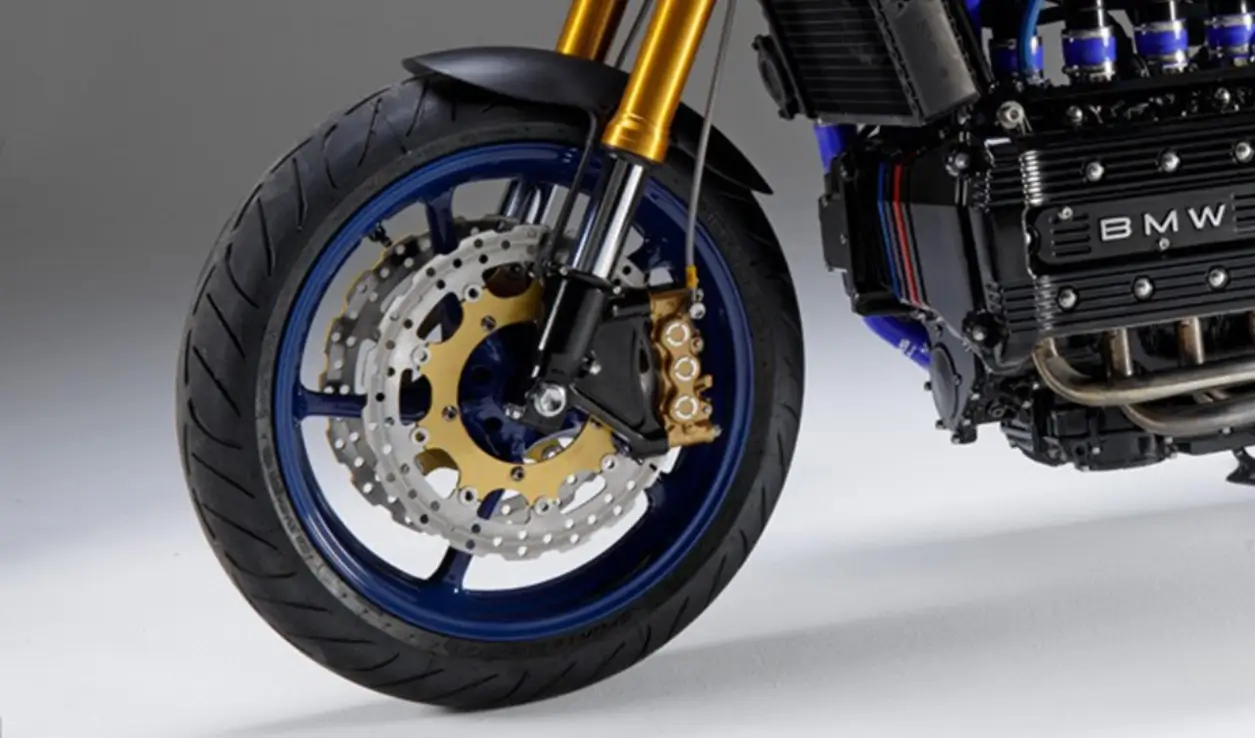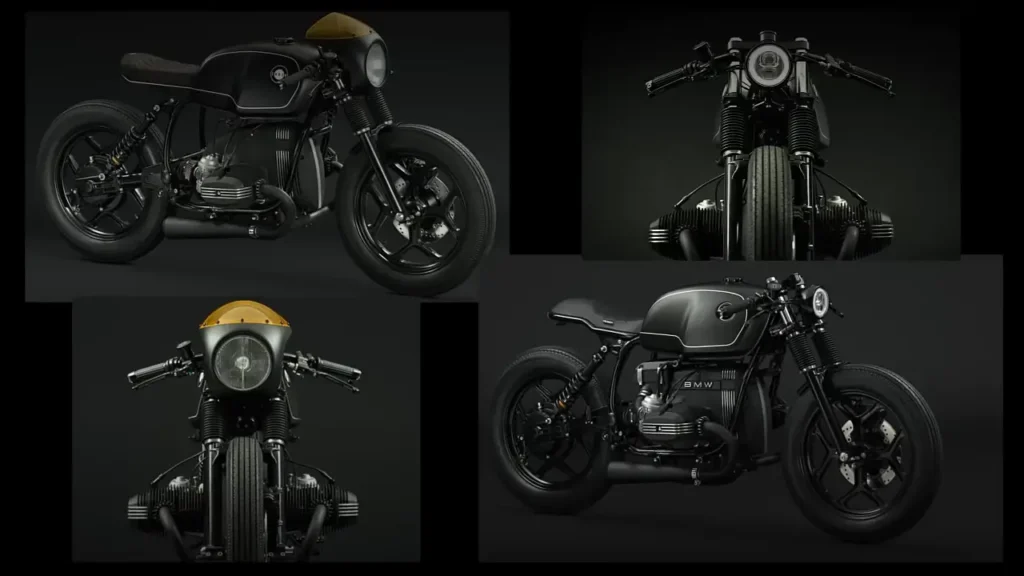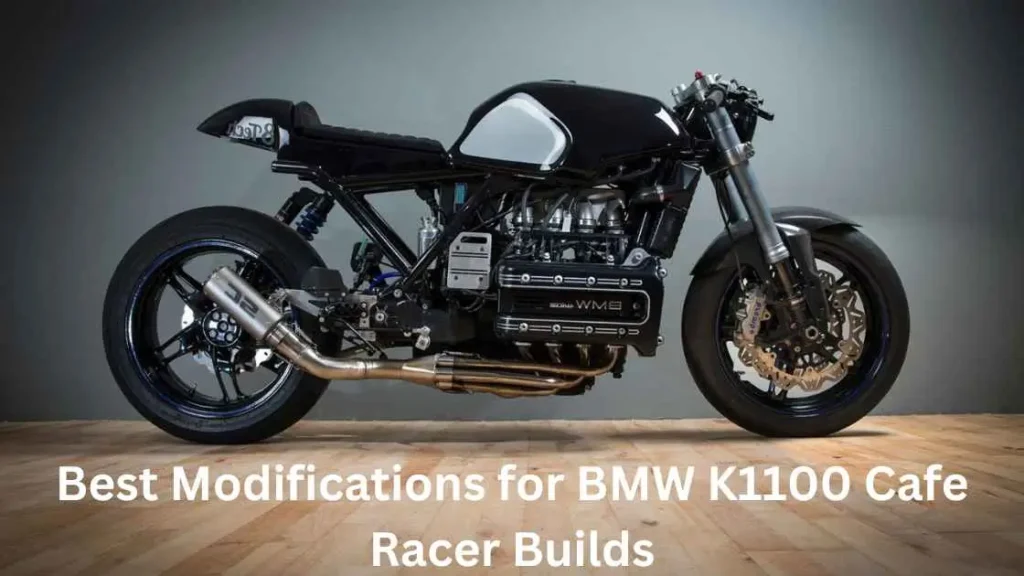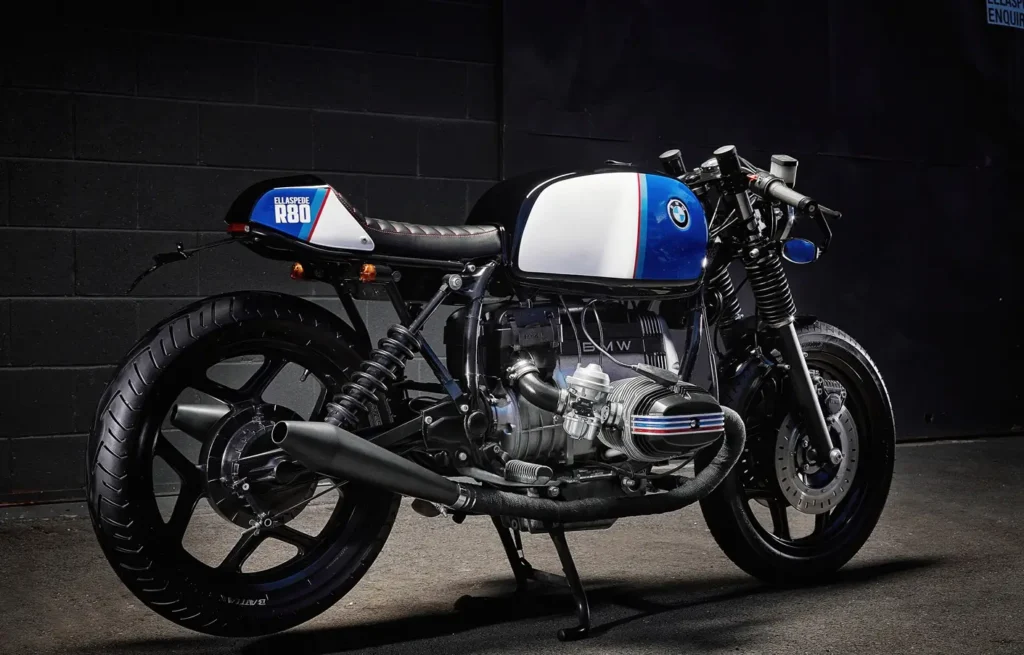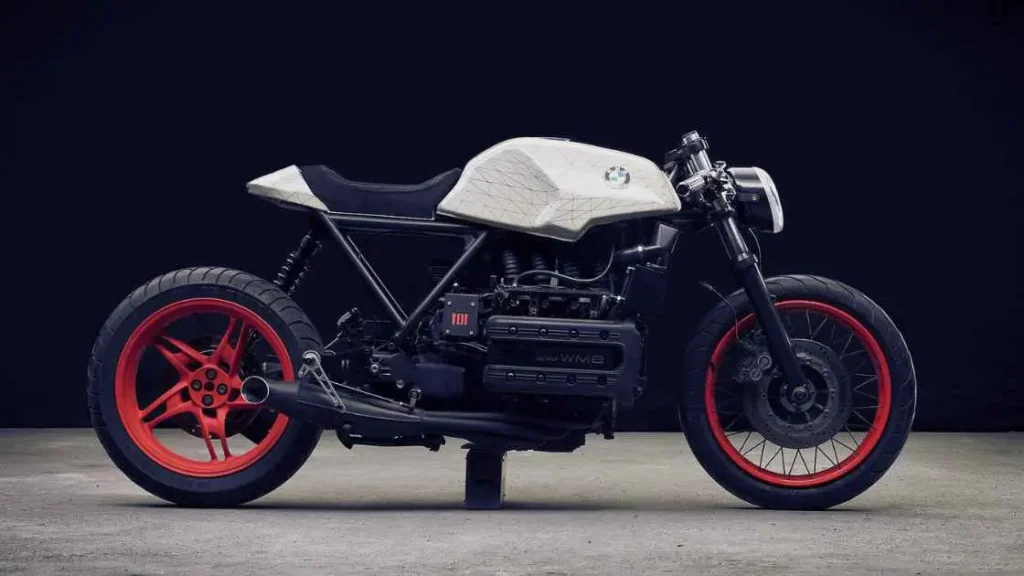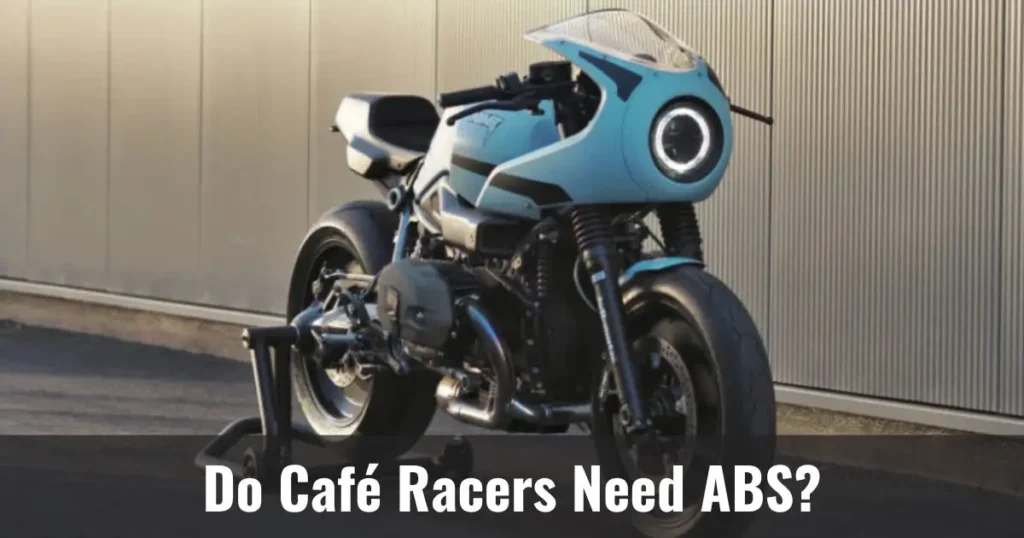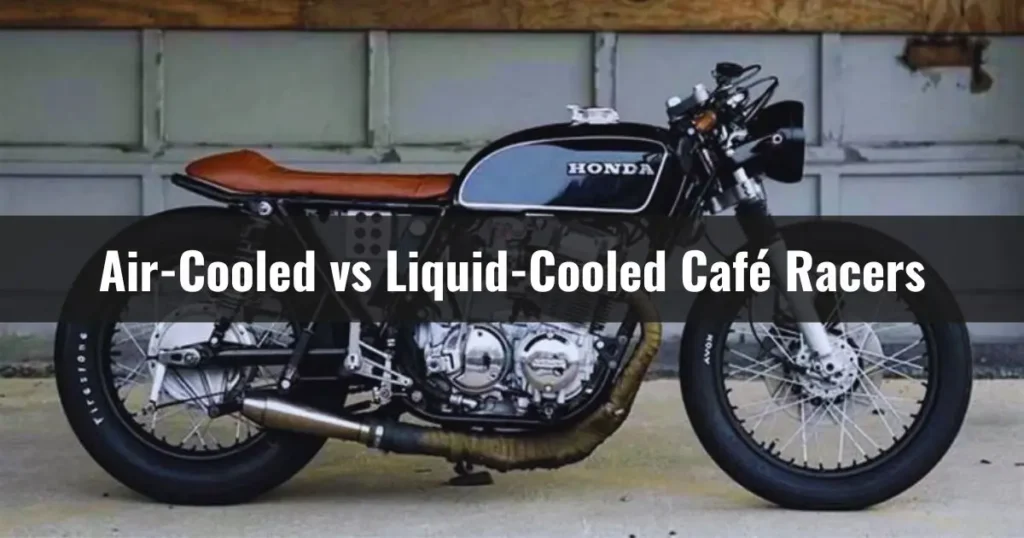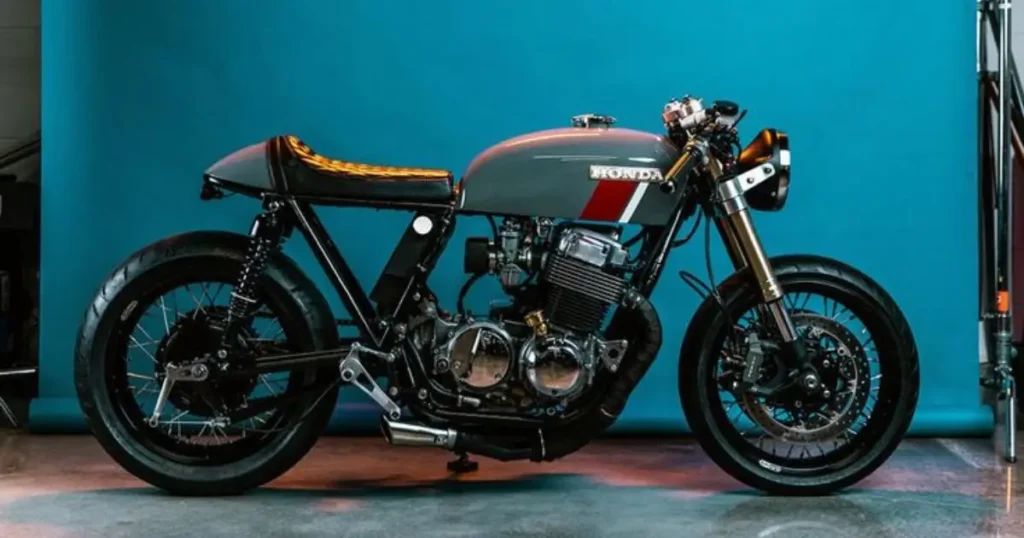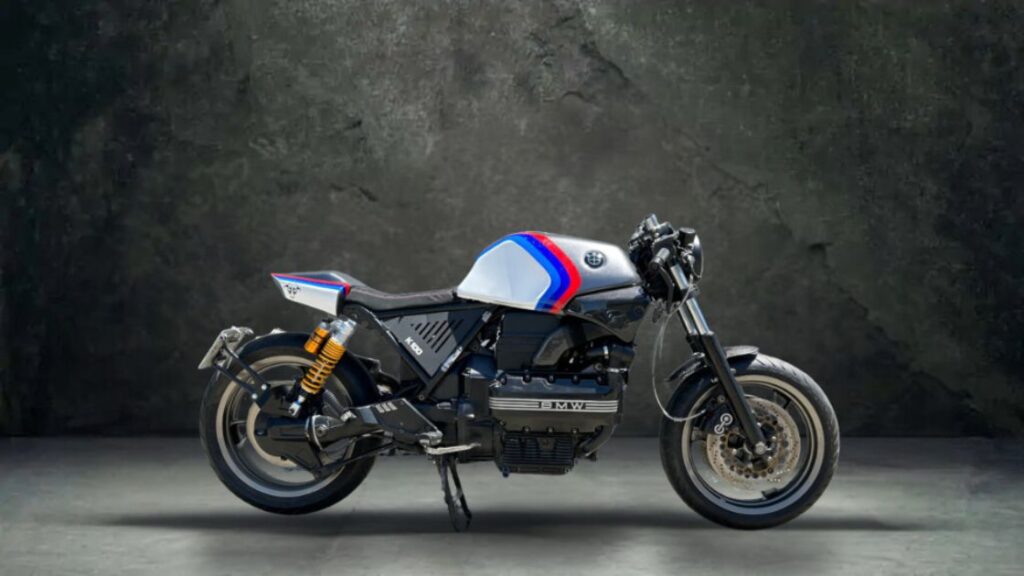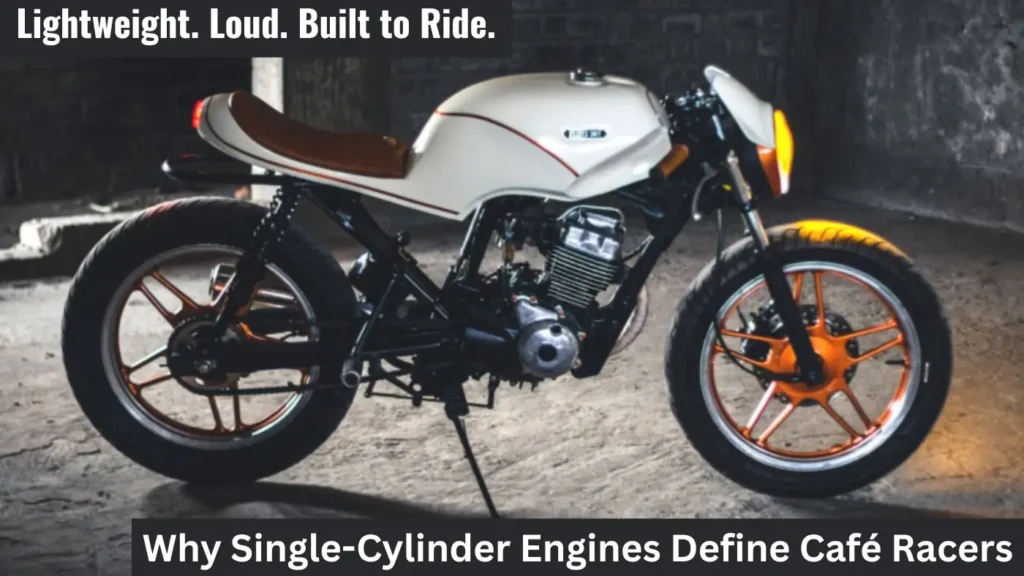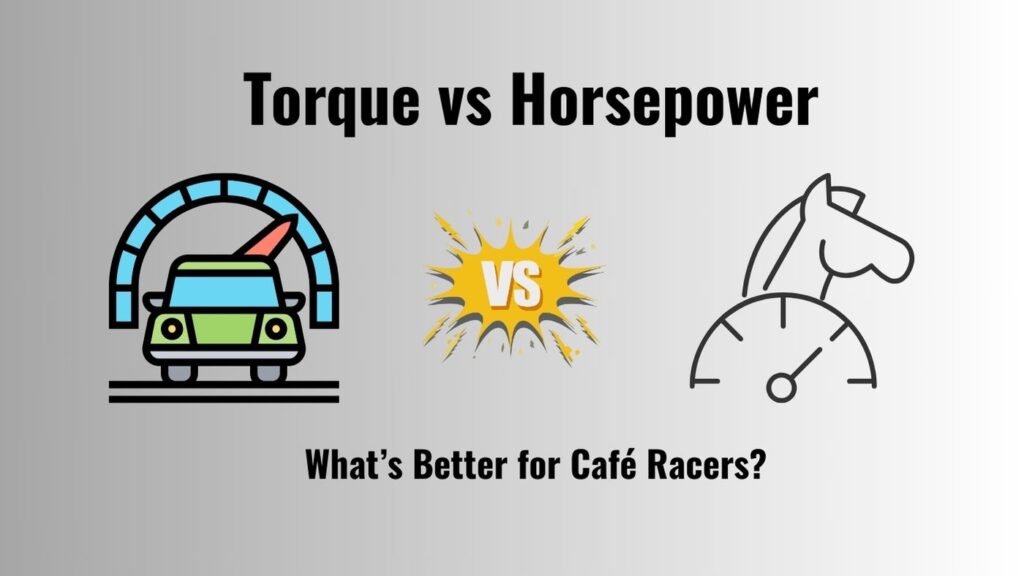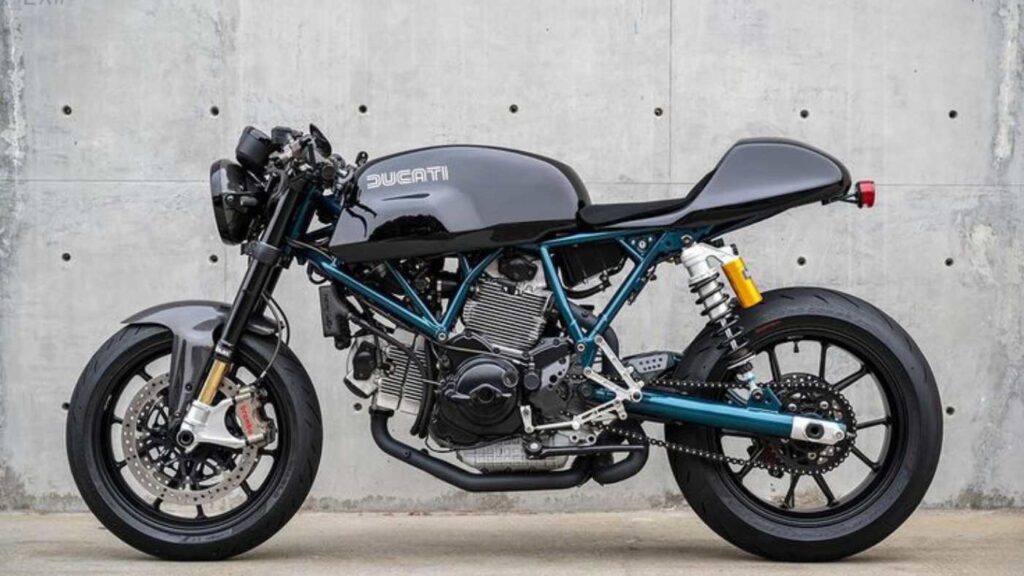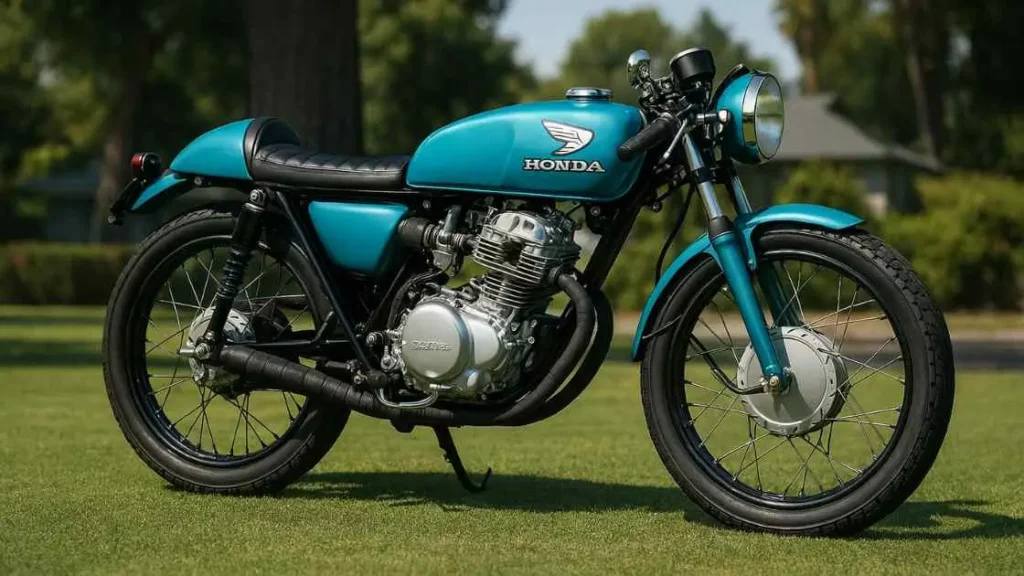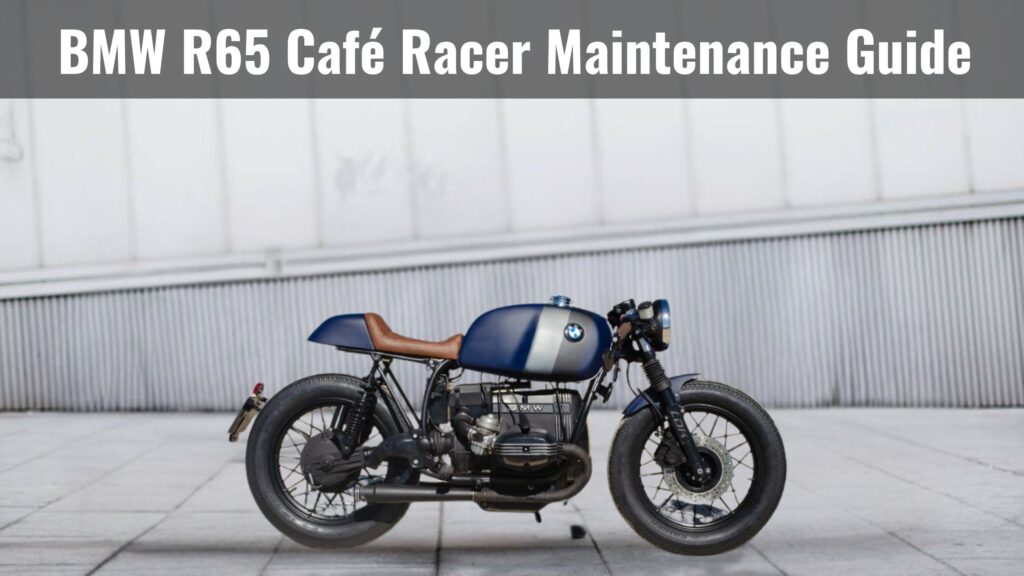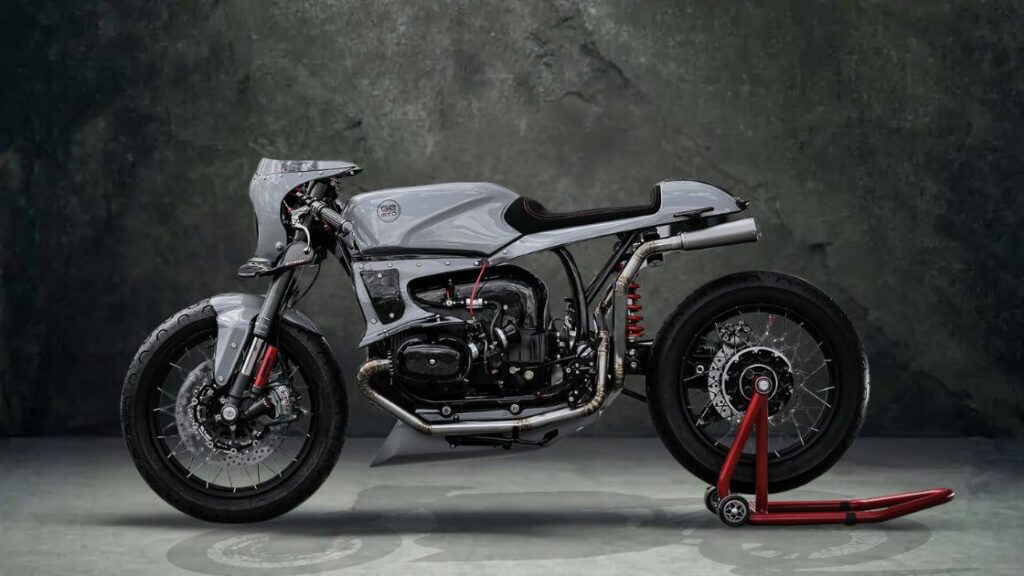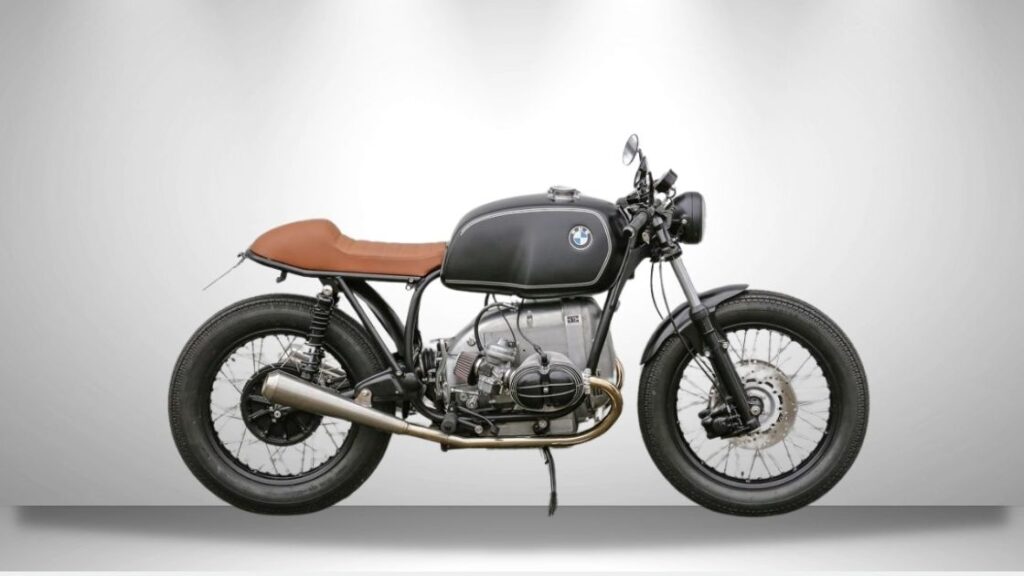Table of Contents
ToggleThe BMW K100 has earned a special place in the hearts of motorcycle enthusiasts thanks to its powerful engine, unique design, and versatile nature. Turning this classic bike into a cafe racer not only boosts its performance but also amps up its visual appeal. However, this transformation can introduce new challenges, especially with the brake system. Keeping the brakes in top-notch condition is vital for both safety and performance.
In this article, we’ll explore common brake issues that BMW K100 cafe racer owners face and offer practical solutions to keep your ride running smoothly and safely.
Why is understanding the BMW K100 brake system essential for cafe racer owners?
The BMW K100’s brake system consists of several key components: brake pads, rotors, calipers, and the master cylinder. These parts work together to ensure your motorcycle can stop safely. When you transform the K100 into a cafe racer, changes in weight distribution, braking habits, and aesthetics can impact these components. Understanding how each part functions and interacts is essential for diagnosing and fixing any brake issues that arise.
2. Common BMW K100 Cafe Racer Brake Problems
2.1. Brake Fade
- How can you prevent brake fade in your BMW K100 cafe racer?
Brake fade happens when your braking system gets too hot, causing it to lose effectiveness. This is a common issue during prolonged or aggressive braking. The intense heat can cause the brake fluid to boil or the brake pads to lose their grip, leading to a noticeable drop in braking performance.
Causes: Brake fade is primarily caused by excessive heat buildup, worn brake pads, and poor ventilation of the braking components. Challenging riding conditions, like hilly terrain or an aggressive riding style, can make these issues even worse.
Signs and Symptoms: Signs of brake fade include a spongy brake lever, reduced braking power, and a burning smell coming from the brakes. You might also notice it takes longer to stop the bike or that you need to apply more pressure to the brake lever.
Solutions to Brake Fade:
Cooling Brakes: To keep things cool, use high-performance brake pads and rotors that are designed to handle heat better. Installing ventilated or drilled rotors can also improve airflow and help with cooling.
Upgrading Components: Consider upgrading to performance brake pads and rotors that can handle higher temperatures. Ceramic or sintered brake pads are particularly good because they resist high temperatures really well.
Maintenance: Make it a habit to regularly check and maintain your brake components to avoid overheating. Clean the calipers and rotors to get rid of any debris that could block cooling.
2.2. Spongy Brakes
- What causes spongy brakes in BMW K100 cafe racers and how do you fix them?
Spongy brakes feel soft or mushy when you engage the brake lever, indicating a lack of firmness in the brake system. This can be a serious safety concern as it affects your ability to control the bike.
Causes: Common causes of spongy brakes include air in the brake lines, old or contaminated brake fluid, and worn brake components. Air can get into the brake lines during maintenance or if there’s a leak in the system.
Signs and Symptoms: Symptoms include a brake lever that can be pulled closer to the handlebar with little resistance and inconsistent braking performance. You might also notice a delay in braking response.
Solutions to Spongy Brakes:
Bleeding the Brake Lines: To remove air from the brake lines, bleed them using the proper procedure for the BMW K100. This means opening the bleed valves on the calipers and pumping the brake lever to push out any air bubbles.
Replacing Brake Fluid: Regularly replace old brake fluid with fresh, high-quality fluid to keep your brakes working their best. Over time, brake fluid absorbs moisture, which can reduce its effectiveness.
Checking for Leaks: Inspect the entire brake system for leaks and replace any damaged components. Pay special attention to the brake lines and connections, looking for any signs of fluid seepage.
2.3. Brake Pad Wear
- What are the best strategies to prevent uneven brake pad wear on your cafe racer?
Uneven or rapid brake pad wear can reduce braking efficiency and lead to more brake system problems. It can also cause vibrations or noises when you brake.
Causes: Causes include misalignment of the brake calipers, riding habits, and the quality of the brake pads. Aggressive riding or frequent heavy braking can accelerate pad wear.
Signs and Symptoms: Signs of uneven brake pad wear include visible uneven wear on the pads, squeaking or grinding noises during braking, and a decrease in braking performance. Regularly inspecting the pads can help catch wear early.
Solutions to Brake Pad Wear:
Proper Installation: Make sure to install the brake pads correctly and align them with the rotor. If they are not aligned, it can cause uneven wear and make braking less effective.
Choosing the Right Pads: Choose brake pads that match how you ride and what your cafe racer needs. High-performance pads can last longer and work better.
Maintenance Checks: Check brake pads often for wear and replace them if needed. Watch the pad thickness and replace them before they wear out completely.
2.4. Rotor Issues
- How do you address rotor issues in your BMW K100 cafe racer for smooth braking?
Rotor issues can show up as warping, where the rotor becomes uneven, or scoring, where grooves form on the rotor surface. These problems can reduce braking performance and cause vibrations.
Causes: Causes include too much heat, debris, and poor maintenance. Riding through water or dirt can make debris get stuck between the pad and rotor, causing scoring.
Signs and Symptoms: Symptoms include vibration or pulsing when braking, visible damage to the rotor surface, and less effective braking. Warped rotors can make the brake lever pulsate.
Solutions to Rotor Problems:
Resurfacing or Replacing Rotors: If your rotors are warped or scored, they might need resurfacing or replacement. Machining the rotors can smooth them out, but if they’re severely damaged, it’s best to replace them.
Preventative Measures: Avoid braking aggressively and maintain your vehicle regularly to protect the rotors. Keep the rotors clean and free of debris.
Upgrading Rotors: Upgrade to high-performance rotors for better heat dissipation and durability. Aftermarket rotors with slotted or drilled designs can boost performance.
2.5. Brake Fluid Problems
- What should you know about brake fluid problems and maintenance for your cafe racer?
Brake fluid can degrade over time, losing its effectiveness and compromising braking performance. Since brake fluid is hygroscopic, it absorbs moisture from the air, which lowers its boiling point.
Causes: Common causes include moisture absorption, contamination, and not replacing brake fluid regularly. Contaminated fluid can corrode the brake system.
Signs and Symptoms: Symptoms include a soft brake lever, weaker braking, and dark, discolored brake fluid. Regular checks can spot problems early.
Solutions to Brake Fluid Problems:
Regular Replacement Schedule: Change the brake fluid regularly to keep it working well. It’s often suggested to do this every two years.
Choosing the Right Fluid: Use high-quality brake fluid for the BMW K100. DOT 4 or DOT 5.1 fluid is often recommended because it has a high boiling point.
Keeping the System Clean: Make sure the brake system is clean and dry. Check and clean the brake fluid reservoir and lines regularly.
3. Diagnosing Brake Problems
- How do you diagnose brake problems in your BMW K100 cafe racer?
Proper diagnosis is key to effectively solving brake problems. Here’s a step-by-step guide:
- Inspect Brake Pads: Check for wear, alignment, and thickness. Use a caliper gauge to measure the thickness. Compare it to the manufacturer’s specifications.
- Examine Rotors: Look for warping, scoring, and overall condition. Use a dial indicator to check for rotor runout (warping).
- Check Brake Lines: Inspect for leaks, cracks, and wear. Flex the lines gently to check for any signs of brittleness or cracking.
- Test Brake Lever: Assess the feel and response of the brake lever. It should be firm and consistent, without excessive travel.
- Evaluate Brake Fluid: Check the fluid level, color, and quality. Use a brake fluid tester to check for moisture content.
- Listen for Noises: Identify any unusual sounds during braking. Squealing, grinding, or clicking noises can indicate various issues.
Tools Needed: Basic tools include a brake pad thickness gauge, a brake fluid tester, wrenches, a dial indicator, and a flashlight. A hydraulic brake bleeder can also be helpful for removing air from the lines.
Tips for Identifying Root Causes: Notice the specific symptoms and find their possible causes. Keep a record of when and where the issues happen. Look closely and test things yourself to get useful information.
4. Solutions to Common Brake Problems
4.1. Addressing Brake Fade
- What are effective ways to address brake fade in BMW K100 cafe racers?
Cooling Brakes: Use high-performance brake pads and rotors to ensure proper cooling. Ventilated or drilled rotors improve airflow and prevent excessive heat buildup.
Upgrading Components: Upgrade to performance brake pads and rotors that handle higher temperatures. Ceramic or sintered brake pads resist heat well and perform consistently in extreme conditions.
Maintenance: Regularly check and maintain brake parts to prevent overheating. Clean the calipers and rotors to remove debris that could block cooling. Make sure the brake fluid is in good condition and hasn’t absorbed too much moisture.
4.2. Fixing Spongy Brakes
- How can you fix spongy brakes on your BMW K100 cafe racer?
Spongy brakes feel soft or mushy when you engage the brake lever, indicating a lack of firmness in the brake system. This can be a serious safety concern as it affects your ability to control the bike.
Causes: Common causes of spongy brakes include air in the brake lines, old or contaminated brake fluid, and worn brake components. Air can get into the brake lines during maintenance or if there’s a leak in the system.
Signs and Symptoms: Symptoms include a brake lever that can be pulled closer to the handlebar with little resistance and inconsistent braking performance. You might also notice a delay in braking response.
Solutions to Spongy Brakes:
Bleeding the Brake Lines: To remove air from the brake lines, bleed them using the proper procedure for the BMW K100. This means opening the bleed valves on the calipers and pumping the brake lever to push out any air bubbles. Make sure to use fresh brake fluid during this process.
Replacing Brake Fluid: Regularly replace old brake fluid with fresh, high-quality fluid to keep your brakes working well. Brake fluid absorbs moisture over time, which can make it less effective and cause a spongy feel.
Checking for Leaks: Check the whole brake system for leaks and replace any damaged parts. Look closely at the brake lines and connections for fluid leaks. Tighten any loose connections and replace any worn seals.
4.3. Resolving Brake Pad Wear Issues
- How do you prevent uneven brake pad wear on your BMW K100 cafe racer?
Uneven or rapid brake pad wear can reduce braking efficiency and lead to more brake system problems. It can also cause vibrations or noises when you brake.
Causes: Causes include misalignment of the brake calipers, riding habits, and the quality of the brake pads. Aggressive riding or frequent heavy braking can accelerate pad wear.
Signs and Symptoms: Signs of uneven brake pad wear include visible uneven wear on the pads, squeaking or grinding noises during braking, and a decrease in braking performance. Regularly inspecting the pads can help catch wear early.
Solutions to Brake Pad Wear:
Proper Installation: Make sure to install the brake pads correctly and align them with the rotor. If they are not aligned, it can cause uneven wear and make braking less effective.
Choosing the Right Pads: Choose brake pads that match your riding style and the needs of your cafe racer. High-performance pads can last longer and work better.
Maintenance Checks: Check brake pads often for wear and replace them when needed. Watch the pad thickness and change them before they wear out completely. Use a caliper gauge to measure the thickness and compare it to the manufacturer’s guidelines.
4.4. Handling Rotor Problems
- How should you handle rotor issues in your BMW K100 cafe racer for smooth braking?
Rotor issues can show up as warping, where the rotor becomes uneven, or scoring, where grooves form on the rotor surface. These problems can reduce braking performance and cause vibrations.
Causes: Causes include too much heat, debris, and poor maintenance. Riding through water or dirt can make debris get stuck between the pad and rotor, causing scoring.
Signs and Symptoms: Symptoms include vibration or pulsing when braking, visible damage to the rotor surface, and less effective braking. Warped rotors can make the brake lever pulsate.
Solutions to Rotor Problems:
Resurfacing or Replacing Rotors: If your rotors are warped or scored, they might need resurfacing or replacement. Machining the rotors can smooth them out, but if they’re severely damaged, it’s best to replace them.
Preventative Measures: Avoid braking aggressively and maintain your vehicle regularly to protect the rotors. Keep the rotors clean and free of debris.
Upgrading Rotors: Upgrade to high-performance rotors for better heat dissipation and durability. Aftermarket rotors with slotted or drilled designs can boost performance.
4.5. Managing Brake Fluid Quality
- What should you know about brake fluid problems and maintenance for your cafe racer?
Brake fluid can degrade over time, losing its effectiveness and compromising braking performance. Since brake fluid is hygroscopic, it absorbs moisture from the air, which lowers its boiling point.
Causes: Common causes include moisture absorption, contamination, and not replacing brake fluid regularly. Contaminated fluid can corrode the brake system.
Signs and Symptoms: Symptoms include a soft brake lever, weaker braking, and dark, discolored brake fluid. Regular checks can spot problems early.
Solutions to Brake Fluid Problems:
Regular Replacement Schedule: Replace brake fluid regularly to keep it working well. Experts suggest doing this every two years. Use a brake fluid tester to check for moisture. If the fluid has absorbed too much moisture, replace it.
Choosing the Right Fluid: Use high-quality brake fluid recommended for the BMW K100. DOT 4 or DOT 5.1 fluid is often suggested because it has a high boiling point. Make sure the fluid works well with the brake system parts.
Keeping the System Clean: Keep the brake system clean and dry. Regularly check and clean the brake fluid reservoir and lines. Use a clean, lint-free cloth to wipe the reservoir and look for any contamination.
5. Preventative Maintenance Tips
- Why is regular maintenance crucial for the BMW K100 cafe racer’s brake system?
Regular maintenance is crucial for keeping the brake system in top condition:
- Routine Checks: Regularly check the brake pads, rotors, and fluid levels. Measure the pad thickness with a caliper gauge and check rotor runout with a dial indicator.
- Servicing: Schedule regular servicing with a professional to catch issues early. A trained mechanic can inspect your vehicle thoroughly and make needed adjustments or repairs.
- Spotting Early Signs: Learn to recognize early signs of brake problems and address them promptly. Pay attention to changes in braking performance, unusual noises, or any signs of fluid leaks.
- Using Quality Parts: Use high-quality, OEM (Original Equipment Manufacturer) parts for replacements. While aftermarket parts can offer performance benefits, OEM parts ensure compatibility and reliability.
- Keeping Records: Maintain a detailed log of all maintenance and repairs. Record the date, mileage, and any issues addressed. This can help identify patterns and provide valuable information for future diagnostics.
Conclusion
Taking care of your BMW K100 cafe racer’s brakes is crucial for your safety and how well your bike performs. By learning about common problems and using the fixes we’ve talked about, you can keep your brakes in tip-top shape. Don’t forget to check your brakes regularly and take care of any issues right away to keep your cafe racer running smoothly and safely. Remember, a well-maintained bike is a happy bike – and a happy rider!
FAQs
What are the signs that my brakes need immediate maintenance?
Look for a spongy feel, weak braking, a burning smell, or strange noises like squealing or grinding. Vibrations in the brake lever are also warning signs. If you see fluid leaks, that’s a big red flag. Don’t ignore these signs. Fixing them quickly will keep your bike safe and running well.
When should I replace my brake pads?
Keep an eye on your brake pads. Use a caliper gauge to measure their thickness. If you hear squeaking or grinding sounds when braking, it’s time to replace them. Regular checks and timely replacements will help your brakes work smoothly.
What causes spongy brakes on a BMW K100 Cafe Racer, and how can I fix them?
Spongy brakes can happen due to air in the brake lines, old fluid, or worn parts. To fix this, bleed the brake lines to remove air bubbles. Replace old fluid with fresh, high-quality fluid, and check for leaks. Regular maintenance will keep your brakes firm and responsive.
How can I prevent brake fade on my BMW K100 Cafe Racer?
Brake fade is common, especially during hard braking. To avoid it, use high-performance brake pads and rotors that handle heat well. Ventilated or drilled rotors help with airflow and keep things cool. Maintain your brake parts regularly, and avoid hard braking on steep hills.
What should I do if my brake pads wear unevenly or too quickly?
Uneven or quick brake pad wear can be a problem. First, check that your pads are installed and aligned correctly. Choose quality pads that fit your riding style. Inspect the pads regularly and replace them before they wear out completely. This will help prevent more issues and keep your brakes working well.

